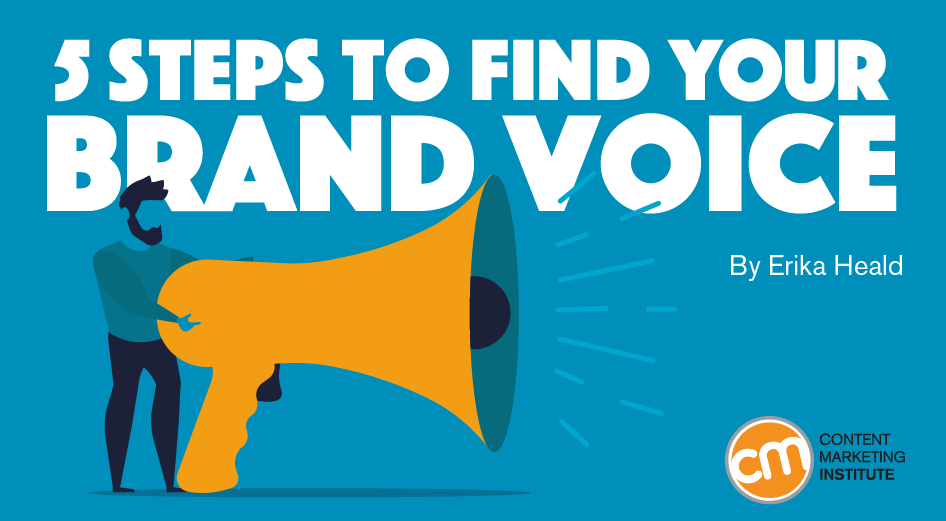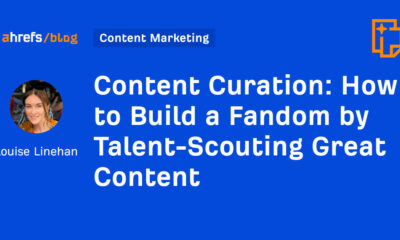MARKETING
5 Ways to Define and Use in Content

Updated April 6, 2022
If your logo didn’t appear with your content, could your audience identify it as coming from your brand? Would someone viewing your content on multiple channels know it all came from the same brand?
If you’re not careful, you can end up with a random assortment of voices and tones in the content produced across your marketing ecosystem. The content won’t provide a consistent picture of your brand or even the same use of language.
This inconsistent brand experience is more common as an organization grows and often exacerbated as external entities such as freelancers and agencies get thrown into the brand’s content creation mix.
You may ask why a brand voice matters. Isn’t it more important to make your content sound human? A brand voice, though, isn’t a non-human voice. It’s a consistent voice that enables your brand to be an easily identified and authoritative source in your area of expertise. Similarly, a consistent brand voice and vocabulary are essential to implementing localized content and intelligent content strategies effectively.
A #brand voice isn’t about creating a non-human voice, says @SFErika via @CMIContent. Click To Tweet
A brand voice chart can help address the challenges. I’ve outlined the five steps to establish, create, and maintain brand voice to drive consistency in your content creation efforts.
1. Gather a representative sample of your content
Cast a wide net – gather every type of content, from videos to web pages and e-books to social media. Now, cast a critical eye on the content. Which examples could have come from any of your competitors? Set those aside. Whittle your examples to a small group of pieces unique to your brand – examples of the brand voice you want to embody. Print and put these examples on a whiteboard, grouping together pieces with a similar feel.
2. Describe your brand voice in three words
In the same room as the whiteboard (or with the board visible to all in a virtual environment), work with your key content creators and owners of the brand identity. Again, cast a wide net and invite content creators throughout your organization, including teams from PR, sales enablement, customer success, etc. Consider the whiteboard content as the best examples of the brand voice you want to embody. Discuss common themes across all of those pieces. Group the examples into three thematic buckets.
If your brand was a person, how would you describe its personality to someone? At this point, describe your competitors as people, too. Is one of your competitors the class bully? Is another the head cheerleader? How do your brand’s personality traits make you different?
If your #brand was a person, how would you describe its personality, asks @SFErika via @CMIContent. #ContentStrategy Click To Tweet
Let’s create an example using these three broad traits:
- Passionate
- Quirky
- Authentic
Define each one in detail. How do these characteristics show up in how you communicate with your audience? How do they come across in the kind of content you create? How do they appear in your focused topics? Let’s continue this example:
- Passionate – expressive, enthusiastic, heartfelt, action-oriented
- Quirky – irreverent, unexpected, contrarian
- Authentic – genuine, trustworthy, engaging, direct
ADVERTISEMENT
The State of Content Marketing 2022 Global Report
Looking to grow your business with content? Explore the ultimate blueprint for content marketing success: the State of Content Marketing 2022 Global Report by Semrush. 500K articles analyzed. 1,500 marketers surveyed. 9 industry experts surveyed. Download your free copy now!
3. Create the brand voice chart
With your brand’s voice defined, illustrate how it turns up concretely in your content. This brand voice chart is an essential reference tool to ensure your content (text and visuals) consistently uses the same voice.
Include three rows for each of the primary characteristics accompanied by three columns – brief description, do’s, and don’ts. If necessary, add a row for secondary characteristics that need a little extra explanation. In this example, “irreverent” is a related word and should be fleshed out so the team is clear on how it is defined (i.e., to challenge the status quo or to be snarky).
4. Ensure writers understand how to put the brand voice into action
You’ve defined your voice and tone and shown it in an easy-to-understand chart. How do you get everyone to use it? Meet with the team – anyone who creates content or communications – and walk them through the chart.
Go through some examples of content that hits the mark. Show in real time how to revise some existing content that isn’t reflective of the defined voice. If possible, provide team members with a laminated or card-stock copy of the brand voice chart to keep at their desks for reference. Make sure an electronic version also is available.
Laminate your brand voice chart for #content creators to keep on their desk, says @SFErika via @CMIContent. Click To Tweet
5. Revisit and revise the brand voice chart as the company evolves
A brand voice chart is not a set-it-and-forget-it tool. As your brand messaging evolves or new competitors come into your market, refresh it with new examples.
A #brand voice chart is not meant to be a set-it-and-forget-it tool. Update it quarterly, says @SFErika via @CMIContent. Click To Tweet
Quarterly, convene your key content creators and communicators to find out if any voice attributes haven’t worked well or are more aspirational than possible. For instance, many brands initially include the word “irreverence” but find their writers are uncomfortable flexing that muscle or key approvers consistently delete that part of the voice in the content. If that’s the case, it may be time for a voice refresh or some new do’s and don’ts.
Cover image by Joseph Kalinowski/Content Marketing Institute




















You must be logged in to post a comment Login